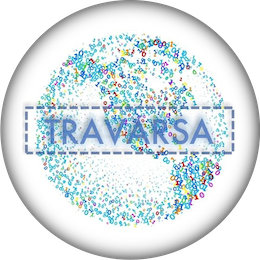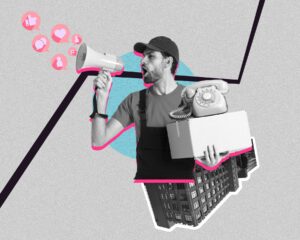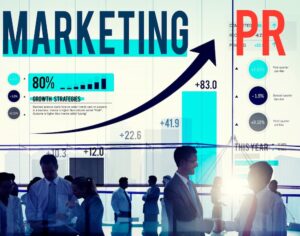Unlock the power of Marketing Automation with Machine Learning. Elevate your strategies, engage....
Read MoreMarketing Automation with Machine Learning

Step into the future of marketing as we unravel the transformative synergy between Marketing Automation and Machine Learning. Discover how this dynamic fusion is reshaping strategies, optimizing campaigns, and driving unprecedented success in the digital landscape
In the digital age, where data is omnipresent and customer expectations are soaring, the fusion of Marketing Automation and Machine Learning emerges as a game-changer. Discover the transformative synergy reshaping the landscape of marketing strategies and customer engagement.
Marketing Automation with Machine Learning
In the ever-evolving landscape of digital marketing, the amalgamation of Marketing Automation and Machine Learning has emerged as a transformative force. The fusion of these two powerful technologies not only streamlines and enhances marketing processes but also propels campaigns into a realm of unprecedented precision and personalization. This article delves into the synergy between Marketing Automation and Machine Learning, exploring how businesses can leverage this dynamic duo to elevate their marketing strategies, engage with their audience on a deeper level, and stay ahead in an increasingly competitive market.
Predictive Lead Scoring
Predictive lead scoring is an advanced marketing strategy that employs machine learning algorithms to analyze historical data and identify patterns that help predict which leads are most likely to convert into customers. Unlike traditional lead scoring, which relies on predetermined criteria, predictive lead scoring leverages data-driven insights to assign scores to leads based on their likelihood of conversion.
Strategy:
- Data Analysis: Collect and analyze a vast array of data, including demographic information, online behaviors, engagement with marketing materials, and historical customer data.
- Feature Engineering: Identify relevant features and attributes that contribute to lead conversion, such as time spent on the website, interaction with specific content, or response to previous marketing campaigns.
- Algorithm Training: Utilize machine learning algorithms to train models on historical data, allowing the system to learn and recognize patterns associated with leads that have converted in the past.
- Continuous Improvement: Implement a feedback loop to continuously refine and update the predictive model as new data becomes available, ensuring ongoing accuracy and effectiveness.
Tools:
- Salesforce Einstein: Salesforce’s AI-powered platform incorporates predictive lead scoring capabilities, offering insights into lead quality and the likelihood of conversion within the Salesforce CRM.
- Leadspace: Leadspace uses machine learning to analyze vast datasets and predict lead scores. It provides real-time data enrichment and segmentation to enhance lead targeting.
- Infer: Infer is a predictive lead scoring solution that integrates with various marketing automation platforms. It uses machine learning to identify and prioritize leads with the highest potential to convert.
- Lattice Engines: Lattice Engines leverages AI and machine learning to predict lead scores and helps marketing and sales teams prioritize their efforts based on the likelihood of conversion.
- MadKudu: MadKudu utilizes machine learning to analyze customer data and behavior, providing predictive lead scoring insights. It integrates with popular marketing automation platforms for seamless implementation.
Predictive lead scoring allows marketing and sales teams to focus their efforts on leads with the highest probability of conversion, improving efficiency and contributing to more successful customer acquisition strategies. The integration of machine learning in this process enhances the accuracy and adaptability of lead scoring models over time.
Dynamic Content Personalization
Dynamic content personalization is an advanced digital marketing strategy that leverages machine learning to tailor content in real-time based on individual user behavior, preferences, and historical interactions. This strategy goes beyond static content delivery by dynamically adjusting the content elements to create a more personalized and engaging experience for each user.
Strategy:
- User Segmentation: Analyze user data to create segments based on demographics, browsing history, purchase behavior, and other relevant factors. These segments serve as the foundation for delivering personalized content.
- Behavioral Tracking: Implement tracking mechanisms to monitor user behavior across various touchpoints. This includes interactions with websites, email engagement, social media activity, and other digital channels.
- Machine Learning Algorithms: Utilize machine learning algorithms to analyze user data and predict the most relevant content for each individual. These algorithms learn from past interactions and continuously adapt to changing user behaviors.
- Real-time Adaptation: Dynamically adjust content elements such as images, headlines, product recommendations, and calls-to-action in real-time, ensuring that users receive the most relevant and timely information.
- A/B Testing: Implement A/B testing within personalized content to continually optimize and refine the personalization strategy. Test different variations to understand which elements resonate best with specific user segments.
Tools:
- Optimizely: Optimizely offers experimentation and personalization tools, allowing marketers to A/B test and dynamically personalize content based on user behavior.
- Adobe Target: Part of the Adobe Experience Cloud, Adobe Target enables marketers to personalize content across websites, mobile apps, and other digital channels using AI-driven personalization algorithms.
- Dynamic Yield: Dynamic Yield provides a comprehensive personalization platform that includes real-time audience segmentation, A/B testing, and personalized recommendations for web and mobile.
- Evergage (now a part of Gartner): Evergage focuses on real-time personalization, allowing marketers to create and deliver personalized experiences across websites, email, and mobile apps.
- Qubit: Qubit’s personalization platform combines AI and behavioral analysis to deliver personalized experiences across various digital channels, including websites and mobile apps.
Dynamic content personalization enhances user engagement, conversion rates, and overall customer satisfaction by delivering content that aligns with individual preferences and behaviors. This strategy is particularly effective in industries where personalized experiences play a crucial role, such as e-commerce, travel, and content publishing.
Predictive Email Marketing
Predictive email marketing is an advanced approach that utilizes machine learning algorithms to predict the optimal timing, content, and personalized elements for sending emails to individual recipients. This strategy goes beyond traditional email marketing by leveraging data-driven insights to enhance email campaign effectiveness and engagement.
Strategy:
- Data Analysis: Collect and analyze a diverse set of data, including historical email engagement, user preferences, purchase history, and behavior across various channels.
- Predictive Models: Implement machine learning models that can predict the best times for sending emails to individual recipients based on their past behavior and engagement patterns.
- Content Personalization: Dynamically personalize email content based on user data, ensuring that each recipient receives content relevant to their preferences, interests, and previous interactions.
- Segmentation and Targeting: Use predictive analytics to segment the email list based on factors such as predicted engagement levels, likelihood to convert, and specific user preferences. Targeted segmentation ensures more relevant content delivery.
- Continuous Optimization: Implement a feedback loop to continuously refine and optimize the predictive models based on real-time data, ensuring that the email marketing strategy remains effective over time.
Tools:
- Mailchimp: Mailchimp’s Predicted Demographics and Predicted Engagement tools leverage machine learning to predict user behavior and automate email personalization, including send time optimization.
- SendGrid (Twilio SendGrid): SendGrid’s Email Marketing service provides machine learning-driven features for send time optimization, helping users determine the optimal time to send emails to maximize engagement.
- HubSpot: HubSpot’s Marketing Hub includes predictive lead scoring and email marketing tools that leverage machine learning to enhance the targeting and personalization of email campaigns.
- Iterable: Iterable is a cross-channel marketing platform that incorporates machine learning to predict user engagement and automate personalized email campaigns.
- Salesforce Marketing Cloud: Salesforce Marketing Cloud offers predictive analytics features for email marketing, helping marketers make data-driven decisions for content personalization and send time optimization.
Predictive email marketing allows businesses to deliver more targeted and personalized email campaigns, resulting in improved open rates, click-through rates, and overall campaign performance. By leveraging machine learning, marketers can optimize their email strategies and provide a more engaging experience for their audience.
Automated Customer Segmentation
Automated customer segmentation is a marketing strategy that uses machine learning algorithms to automatically categorize a customer base into distinct segments based on various criteria such as demographics, behavior, purchase history, and engagement. Unlike manual segmentation, automated methods use data-driven insights to dynamically classify customers into segments, allowing for more accurate and real-time targeting.
Strategy:
- Data Integration: Consolidate and integrate data from various sources, including CRM systems, transaction records, and customer interactions across digital channels, to create a comprehensive dataset for segmentation.
- Algorithm Selection: Choose or develop machine learning algorithms that are suitable for automated segmentation, considering factors such as the complexity of data and the desired granularity of segments.
- Continuous Learning: Implement algorithms that can adapt and learn from new data over time, ensuring that customer segments evolve as customer behaviors and preferences change.
- Real-Time Application: Automate the segmentation process to operate in real-time, allowing marketing campaigns to instantly respond to shifts in customer behavior and preferences.
- Personalized Marketing Campaigns: Tailor marketing messages and campaigns based on the characteristics of each segment, ensuring that the content resonates with the specific needs and interests of each group.
Tools:
- Segment: Segment is a customer data platform that facilitates automated customer segmentation. It allows users to define rules and conditions for segmentation based on customer attributes and behavior.
- Salesforce Marketing Cloud: Salesforce Marketing Cloud includes features for automated customer segmentation, enabling marketers to create dynamic customer segments based on various criteria within the Salesforce CRM.
- Customer.io: Customer.io provides a platform for automated segmentation and personalized messaging. It allows marketers to create dynamic segments based on user behavior and preferences.
- Optimizely: Optimizely’s experimentation platform includes capabilities for audience segmentation, allowing marketers to create and target segments based on user behavior and experimentation results.
- Custora: Custora uses predictive analytics and machine learning to automate customer segmentation and identify high-value customer segments for targeted marketing campaigns.
Automated customer segmentation empowers marketers to deliver more relevant and personalized experiences to different customer groups. By leveraging machine learning, businesses can optimize their segmentation strategies and ensure that marketing efforts are aligned with the evolving preferences and behaviors of their customer base.
Churn Prediction and Prevention
Churn prediction and prevention is a data-driven marketing strategy that utilizes machine learning algorithms to analyze customer data and predict which customers are at risk of churning, i.e., discontinuing their relationship with a business. The strategy aims to identify early indicators of potential churn, allowing businesses to implement targeted interventions and prevent customer attrition.
Strategy:
- Data Collection: Aggregate and integrate data from various sources, including customer interactions, transaction history, customer service interactions, and engagement metrics, to create a comprehensive dataset for analysis.
- Feature Selection: Identify key features and factors that contribute to customer churn, such as declining usage patterns, decreased engagement, or extended periods of inactivity.
- Machine Learning Models: Implement machine learning models, such as logistic regression or decision trees, to predict the likelihood of churn based on historical patterns and identified features.
- Threshold Setting: Establish a threshold for churn probability, beyond which customers are considered at risk. This threshold helps classify customers and prioritize intervention efforts.
- Proactive Interventions: Develop automated workflows or campaigns to proactively engage and retain customers identified as at-risk. This might include targeted promotions, personalized communication, or special offers.
Tools:
- Gainsight: Gainsight is a customer success platform that uses predictive analytics to identify and prevent churn. It offers features like health scoring and automated playbooks for customer retention.
- Totango: Totango provides a customer success platform with machine learning capabilities to predict customer health and identify potential churn risks. It offers proactive engagement tools for customer retention.
- Pendo: Pendo is a product analytics platform that can be used to track user behavior and engagement. While primarily focused on product usage, it can provide insights that contribute to churn prediction.
- ChurnZero: ChurnZero is a customer success platform that uses machine learning to predict customer health and automate engagement strategies to reduce churn.
- Intercom: Intercom is a customer messaging platform that can be leveraged for proactive customer communication and personalized engagement to prevent churn.
Churn prediction and prevention help businesses take a proactive approach to customer retention. By identifying potential churn risks early and implementing targeted strategies, companies can improve customer satisfaction, loyalty, and overall long-term revenue.
Predictive Content Recommendations
Predictive content recommendations involve the use of machine learning algorithms to analyze user behavior, preferences, and historical interactions to predict and suggest relevant content. This strategy aims to enhance user engagement by dynamically presenting users with personalized and contextually relevant content recommendations across various digital channels.
Strategy:
- Data Gathering: Collect and aggregate data from various sources, including user interactions on websites, past content consumption patterns, social media activity, and preferences expressed through explicit feedback.
- User Profiling: Create detailed user profiles that encompass a user’s preferences, interests, and behavior. Machine learning models will leverage this profile data for accurate content recommendations.
- Algorithm Selection: Choose machine learning algorithms that are suitable for content recommendation, such as collaborative filtering, content-based filtering, or hybrid approaches. Train these models on historical user data.
- Real-Time Analysis: Implement real-time analysis of user behavior to dynamically adjust content recommendations as user preferences evolve.
- A/B Testing: Continuously test and optimize content recommendation algorithms through A/B testing to ensure the effectiveness of the recommendation engine.
Tools:
- Amazon Personalize: Amazon Personalize is a machine learning service that enables the creation of personalized recommendations for users on websites, applications, and more. It leverages deep learning algorithms to analyze user behavior.
- Adobe Sensei: Adobe Sensei is Adobe’s AI and machine learning platform that powers various Adobe products. It includes capabilities for content recommendation, leveraging data from Adobe’s Experience Cloud.
- Sailthru: Sailthru offers a personalization platform that utilizes machine learning to analyze customer behavior and deliver personalized content recommendations through various channels, including email and websites.
- Acquia Lift: Acquia Lift is a personalization platform that provides content recommendations based on machine learning algorithms. It integrates with various content management systems (CMS) and marketing technologies.
- Episerver (Optimizely): Episerver, now part of Optimizely, offers a personalization and experimentation platform that uses machine learning to deliver personalized content recommendations across digital experiences.
Predictive content recommendations play a crucial role in enhancing user engagement, increasing content consumption, and improving overall user satisfaction. By leveraging machine learning to understand individual preferences and behaviors, businesses can deliver more relevant and compelling content to their audience.
Automated A/B Testing
Automated A/B testing is a digital marketing strategy that employs machine learning algorithms to automate the process of A/B testing. A/B testing involves comparing two or more variations of a webpage, email, or other marketing asset to determine which performs better in terms of a specific goal (e.g., conversion rate, click-through rate). Automated A/B testing goes a step further by dynamically adjusting variables based on real-time data, allowing for faster and more efficient optimization.
Strategy:
- Variable Selection: Identify key variables for testing, such as headlines, images, calls-to-action, or other elements that impact user engagement and conversion.
- Algorithm Implementation: Implement machine learning algorithms that can analyze user interactions and automatically adjust the tested variables in real-time based on performance data.
- Continuous Monitoring: Continuously monitor user responses and behavior to understand which variations are performing better. The algorithm adapts and refines the test dynamically as more data is collected.
- Goal Setting: Clearly define the goals of the A/B test, whether it’s improving click-through rates, increasing conversions, or achieving other specific objectives.
- Iterative Optimization: Iterate on successful variations and test new hypotheses to continually improve and optimize marketing assets.
Tools:
- Optimizely: Optimizely is a popular experimentation platform that provides automated A/B testing capabilities. It uses machine learning to dynamically adjust variables and optimize campaigns.
- Google Optimize: Google Optimize offers A/B testing and multivariate testing solutions. While not fully automated, it provides features for dynamically adjusting elements based on user behavior.
- VWO (Visual Website Optimizer): VWO is a conversion optimization platform that includes automated A/B testing features. It leverages machine learning to analyze and adjust variables for better performance.
- AB Tasty: AB Tasty is an experimentation platform that incorporates machine learning to automate aspects of A/B testing. It provides tools for testing and personalization.
- Split.io: Split.io is a feature experimentation platform that uses machine learning to automate A/B testing and provide insights into feature performance.
Automated A/B testing enables marketers to streamline the optimization process, reducing the time and resources required for testing and improving the overall effectiveness of digital marketing campaigns. By leveraging machine learning, businesses can make data-driven decisions and continually refine their strategies for better results.
Predictive Customer Lifetime Value (CLV)
Predictive Customer Lifetime Value (CLV) is a strategic approach that utilizes machine learning algorithms to forecast the potential value a customer is expected to generate throughout their entire relationship with a business. By analyzing historical data, behavior, and various customer interactions, predictive CLV provides insights into the expected revenue contribution of individual customers over time.
Strategy:
- Data Integration: Integrate and consolidate data from diverse sources, including purchase history, customer interactions, engagement metrics, and demographics, to create a comprehensive dataset for analysis.
- Feature Engineering: Identify key features and attributes that contribute to customer value, such as average order value, frequency of purchases, and customer loyalty.
- Machine Learning Models: Implement machine learning models, such as regression models or machine learning algorithms like Random Forest or Gradient Boosting, to predict the future value of individual customers based on historical patterns and identified features.
- Dynamic Analysis: Continuously analyze and update the predictive models as new data becomes available. This ensures that the predictions remain accurate and adapt to changing customer behaviors.
- Segmentation: Segment customers based on their predicted CLV to tailor marketing strategies and customer experiences according to the value they are likely to bring to the business.
Tools:
- BlueConic: BlueConic is a customer data platform that provides predictive analytics capabilities, including predictive CLV. It helps businesses analyze customer data to predict future value and personalize marketing efforts.
- Custora: Custora is a customer analytics platform that leverages machine learning to predict customer lifetime value. It provides insights into customer segments and behaviors for targeted marketing strategies.
- Woopra: Woopra is a customer analytics platform with predictive analytics features. It enables businesses to predict CLV and optimize customer experiences based on behavioral data.
- Kissmetrics: Kissmetrics is a customer engagement platform that includes predictive analytics for CLV. It helps businesses track and analyze customer behavior to make data-driven decisions.
- RJMetrics (now part of Magento): RJMetrics, now a part of Magento, provides predictive analytics solutions, including predictive CLV. It offers tools for analyzing customer data and optimizing marketing strategies.
Predictive Customer Lifetime Value is a valuable metric for businesses seeking to optimize their marketing efforts, allocate resources efficiently, and tailor strategies based on the long-term value each customer is expected to bring. By incorporating machine learning into CLV predictions, businesses can make more accurate and strategic decisions for customer acquisition and retention.
Dynamic Pricing Optimization
Dynamic Pricing Optimization is a pricing strategy that utilizes machine learning algorithms and real-time data to dynamically adjust prices based on various factors such as demand, competition, and customer behavior. This strategy allows businesses to set prices flexibly, responding to market conditions and maximizing revenue.
Strategy:
- Data Integration: Aggregate and integrate data from diverse sources, including market trends, competitor pricing, historical sales data, and customer behavior, to create a comprehensive dataset for analysis.
- Algorithm Selection: Choose machine learning algorithms that can analyze the data and predict optimal pricing based on various factors. Common approaches include reinforcement learning, regression models, and deep learning.
- Real-Time Adjustments: Implement algorithms that can adjust prices in real-time based on changing market conditions, demand fluctuations, and other relevant factors.
- Competitor Analysis: Monitor competitor pricing strategies and adjust dynamic pricing models accordingly to maintain competitiveness.
- Profit Maximization: Set pricing strategies that balance maximizing revenue with maintaining customer satisfaction, taking into account factors like price elasticity and customer segmentation.
Tools:
- Revionics: Revionics is a pricing optimization platform that uses machine learning to analyze market trends, competitor pricing, and customer behavior. It provides tools for dynamic pricing and profit optimization.
- Prisync: Prisync is a competitor price tracking and dynamic pricing optimization tool. It helps businesses monitor competitor prices and adjust their own pricing strategies dynamically.
- Perfect Price: Perfect Price is a pricing optimization platform that uses machine learning to analyze market data and optimize pricing strategies. It provides tools for dynamic pricing based on demand and competition.
- Competera: Competera is a pricing optimization and competitive intelligence platform. It leverages machine learning to analyze market conditions and competitor pricing, enabling businesses to optimize their pricing strategies.
- Vendavo: Vendavo offers pricing optimization solutions with machine learning capabilities. It helps businesses analyze market dynamics, customer behavior, and other factors to set optimal prices.
Dynamic Pricing Optimization is particularly effective in industries with volatile market conditions or where price sensitivity varies. By leveraging machine learning, businesses can optimize pricing strategies to respond dynamically to market changes, improve competitiveness, and maximize revenue.
Automated Social Media Marketing
Automated Social Media Marketing is a digital marketing strategy that utilizes automation tools and machine learning algorithms to streamline and optimize social media activities. This strategy involves automating various aspects of social media management, including posting schedules, content curation, engagement, and analytics. By leveraging automation, businesses can maintain an active social media presence, reach a wider audience, and optimize their social media campaigns.
Strategy:
- Content Scheduling: Use automation tools to schedule social media posts in advance, ensuring a consistent and timely presence on various platforms.
- Content Curation: Implement machine learning algorithms to curate relevant and engaging content for sharing. These algorithms can analyze user preferences and industry trends to suggest content that resonates with the target audience.
- Engagement Automation: Use chatbots and automated responses to engage with followers, answer common queries, and direct users to relevant content or resources.
- Analytics and Reporting: Employ machine learning for social media analytics, allowing businesses to gain insights into user behavior, content performance, and the effectiveness of social media campaigns.
- Ad Campaign Optimization: Utilize automation tools to optimize social media advertising campaigns. This includes adjusting ad targeting, budgets, and creative elements based on real-time performance data.
Tools:
- Hootsuite: Hootsuite is a social media management platform that allows users to schedule posts, monitor engagement, and manage multiple social media accounts from one dashboard.
- Buffer: Buffer is a social media scheduling tool that enables users to schedule posts for various platforms. It also provides analytics and insights to optimize posting strategies.
- Sprout Social: Sprout Social is a comprehensive social media management platform that includes automation features, social listening, and analytics for effective social media marketing.
- Chatfuel: Chatfuel is a chatbot-building platform for Facebook Messenger. It allows businesses to create automated chatbots for engaging with users on social media.
- Later: Later is a social media scheduling tool focused on visual content. It allows users to plan and schedule Instagram, Twitter, and Facebook posts in advance.
Automated Social Media Marketing streamlines routine tasks, allowing marketers to focus on strategy and creativity. By incorporating machine learning, businesses can enhance their social media presence, improve engagement, and make data-driven decisions for more effective social media campaigns.
In the realm of Marketing Automation with Machine Learning, the potential for innovation and impact is boundless. As businesses strive to forge stronger connections with their audience, optimize operations, and drive meaningful results, the marriage of these technologies stands as a beacon of progress. The journey doesn’t end here; instead, it marks the beginning of a new era where data-driven insights, automation precision, and machine learning capabilities converge to redefine the boundaries of what is achievable in the dynamic world of digital marketing. By embracing this synergy, businesses can not only adapt to the challenges of today but also position themselves as pioneers shaping the marketing landscape of tomorrow.
How to start your career in App Development ?
Unlock the path to a thriving app development career with our guide. From....
Read MoreIntroduction to Backend Web Development
Explore the world of backend development and its core components – servers, databases,....
Read MoreHow to start your career in the field of Data Science?
Instagram has crossed the threshold of being a place to watch extremely filtered....
Read MoreGuerilla Marketing Strategies – Tools and Tactics
Discover the power of guerrilla marketing strategies – from viral stunts to interactive....
Read MoreMulti-channel Marketing Orchestration and Attribution Modeling
Unlock the power of multi-channel marketing orchestration and attribution modeling. Learn to streamline....
Read MoreZero Trust Architecture (ZTA) – Strategies and Tools
Unlock the power of Marketing Automation with Machine Learning. Elevate your strategies, engage....
Read MoreVarious Web Development Stacks – Introduction
Discover the right web development stack for your project! Explore the components, features,....
Read MoreAdvance PR Strategies in Marketing: Benefits & Tools
Discover the power of PR in marketing. Learn about the benefits & tools....
Read MoreOWASP (Open Web Application Security Project)
Explore how OWASP revolutionizes web security with its open resources and collaborative community,....
Read MoreHow to start your career in Digital Marketing ?
Launch your Digital Marketing Executive career with our guide. From fundamentals to certifications,....
Read MoreTop 10 Cyber Security Threats Prevention strategies and solutions
Arm yourself with insights! Explore top 10 cyber threats and fortify your digital....
Read MoreComprehensive Guide to JavaScript Frameworks
Explore the diverse world of JavaScript frameworks and libraries for modern web development.....
Read MoreBlockchain Integration in Digital Marketing
Explore the transformative impact of blockchain in digital marketing. Learn how integration enhances....
Read MoreInfluencer Whisper Campaigns – Strategies & Tools
Discover the strategies & tools behind Influencer Whisper Campaigns. Learn how brands can....
Read MoreHow to Start a Career into Cyber Security?
Cyber Security Roadmap: Career Path. Embark on a cybersecurity career journey with our....
Read More















